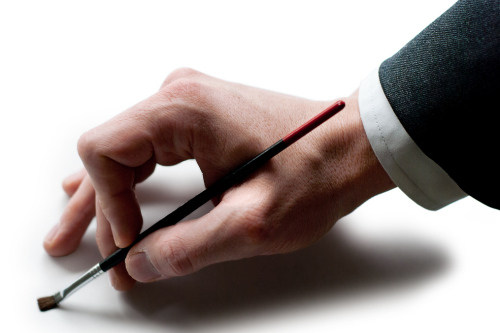Your resume isn’t just a list of jobs — it’s your personal billboard. And in a world where hiring managers skim applications faster than TikTok reels, creativity can be your secret weapon. Whether you’re a student trying to land your first internship, a recent grad breaking into the workforce, or a young professional aiming for that next big step, showing employers that you can think outside the box is a game-changer.
But here’s the catch: creativity doesn’t mean turning your resume into a neon poster with glitter fonts (please don’t). It’s about strategically weaving in your problem-solving skills, innovative ideas, and unique projects so that your resume screams “I add value” before you even walk into the interview.
In this article, we’ll break down practical, proven ways to highlight creativity on your resume — from using powerful action verbs that pop, to showcasing projects that prove you don’t just think differently, you deliver results.
So let’s get creative!
Highlighting Creative Skills and Achievements
1. Numbers Talk: Quantify Your Creativity
To make your creative skills and accomplishments stand out on your resume, try to quantify them using metrics.
Anyone can say they’re “creative,” but numbers prove it. Instead of writing “Redesigned company website,” try:
👉 “Redesigned company website, resulting in a 25% increase in traffic and 15% boost in conversions.”
That one line shows you don’t just have ideas — you have impact. Employers love that.
2. Projects = Proof
Don’t just tell them you’re creative — show them. Add a Projects section or weave your best work into your experience. For example:
- Launched a successful social media campaign that increased audience engagement by 30%
- Collaborated on an award-winning product design showcased at a major industry event
- Built a side project that solved a common workflow problem
Pro tip: Link to your portfolio or personal site if possible. It’s like saying, “Don’t take my word for it — see for yourself.”
3. Power Verbs That Pop
Skip the boring verbs and go bold with verbs that highlight innovation. Instead of using generic verbs like “worked” or “participated”, try using more specific verbs that showcase your creativity and the initiative you took in your roles. Action verbs like:
- Innovated
- Devised
- Orchestrated
- Transformed
- Conceptualized
These instantly position you as someone who doesn’t just do tasks — you create results.
Design and Layout Considerations
1. Design Like a Pro (Without Going Overboard)
Yes, your resume should look good. But remember: balance creativity with professionalism. Choose an appropriate format and template.
- Format smartly: Chronological, functional, or hybrid — pick the one that shows your strengths best.
- Add subtle branding: A clean color palette, modern fonts, and consistent formatting can make your resume stand out without looking gimmicky.
- Think digital + print: Your resume should look just as good in a PDF as it does on paper.
Opting for a tailored resume template will help you stand out from others and present your information in a visually appealing way.
2. Creativity Across Sections
Your resume has more creative real estate than you think. Incorporate visual elements and branding when it makes sense. For example:
- Work Experience: Highlight moments where your innovative ideas solved problems or improved processes.
- Education & Skills: List creative coursework, certifications, or tools (Adobe Creative Suite, Figma, UX/UI design, etc.).
- Optional Sections: Add a portfolio link, side hustle, or volunteer work that shows your creative edge.
Including graphics and visual elements in your resume can make your resume look visually appealing while displaying your skills effectively… again, when it makes sense.
3. Digital and Print Considerations
Both digital and print considerations can play a significant role when designing a creative resume. When applicable, consider including web design skills, SEO knowledge, and/or email marketing abilities to showcase your expertise. You can create a digital portfolio featuring your work on marketing campaigns, websites, advertisements, and monthly newsletters.
For print, consider aspects like layout, typography, and visual elements suitable for both physical and digital copies of your resume. It is vital to ensure that your resume design translates well between both formats.
Resume Tips for Creative Industries and Roles
Targeting Your Resume for Creative Positions
In order to make your resume stand out for creative positions, focus on showcasing your design skills, experience with tools such as InDesign, and any relevant academic or extracurricular projects. Demonstrate your career accomplishments, editing abilities, and software development skills where appropriate. Be proactive and use bold text, bullet points, and tables to highlight important information for a visually appealing layout.
Case Study: Digital Marketing Specialist Resume
For a Digital Marketing Specialist role, highlight your experience in creating engaging content and running successful marketing campaigns. Some areas to focus on include:
- Editing: Showcase your ability to edit digital content, such as blog posts, websites, or social media content.
- Testing: Emphasize your skills in testing and measuring the effectiveness of digital marketing campaigns.
- Initiative: Demonstrate your proactiveness by mentioning examples of campaigns or projects you took the lead on.
Case Study: Software Developer Resume
When tailoring your resume for a Software Developer position, focus on your experience in coding, problem-solving, and collaboration. Some essential points to include are:
- Coding: List your expertise in various programming languages and tools you’re proficient in.
- Layout and Design: If you have experience in UI/UX design, mention any projects or achievements in that area.
- Side Projects: If you have been involved in any side projects or extracurricular activities related to software development, be sure to highlight them, as they provide evidence of your passion and initiative in the field.
Case Study: Customer Service Representative Resume
Creativity isn’t just for designers or marketers — it’s a valuable skill in customer-facing roles too. Employers want to see how you can think on your feet, solve problems, and improve customer experiences.
Some areas to highlight:
- Problem-Solving: Share examples of how you handled challenging situations with innovative solutions.
Example: “Developed a new ticket-routing system that reduced response times by 20%.” - Communication: Show how you used creative approaches to explain complex information to customers or teammates.
Example: “Created a visual FAQ guide that cut repeat inquiries by 15%.” - Initiative: Employers love when customer service reps go beyond scripts.
Example: “Launched a feedback loop with customers that generated 50+ actionable insights for product improvements.”
By framing your customer service experience creatively, you demonstrate that you’re not just answering calls — you’re improving systems, experiences, and outcomes.
Final Thought
At the end of the day, your resume isn’t just about what you’ve done — it’s about how you show what you’ve done. Creativity is the bridge between your skills and the story you want employers to remember. Whether it’s through numbers that prove your impact, projects that showcase your innovation, or a design that reflects your personal brand, the goal is the same: make it impossible for a hiring manager to forget you!




